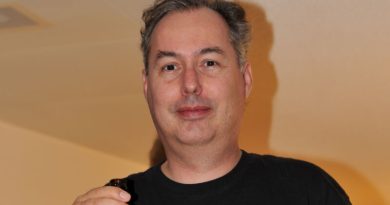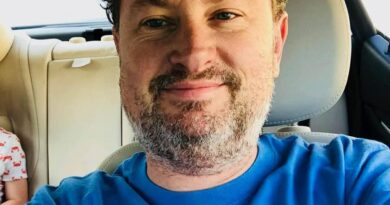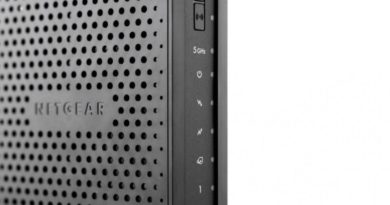Noisebridge May Be Pushed Out Of The Mission District
The internationally renowned anarchist hacker collective Noisebridge is seeking to raise $4 million to secure real estate — and its survival — in San Francisco.
Members of Noisebridge confirmed that the collective is planning to vacate its Mission District digs of nearly a decade by August due to an expiring lease.
While the space is supported entirely by those who use it, the collective recently came to a consensus that outside help is needed to ensure its longevity. To that end, the group is seeking donations, and on April 27 will host a fundraising gala at which it will auction off art and projects with an initial goal of raising $10,000 that evening.
Rumors of Noisebridge’s displacement from 2169 Mission St. have been brewing for some time. Fearing that it would be booted from the space last year, the collective was able to negotiate a one-time lease extension with its landlord.
But Noisebridge member Victoria Fierce, who is a housing organizer by day, told the San Francisco Examiner that Noisebridge’s growing membership and other compounding issues have made further extensions at its current home infeasible.
“We are outgrowing our space. Noisebridge is like a gas — it expands to fill whatever container it’s in, and we’ve filled this one up,” said Fierce. “Also, if we were to renew our lease with the landlord it would be prohibitively more expensive.”
Fierce said Noisebridge is facing a $30,000 fine for code violations and was cited by The City for unpermitted construction. According to the San Francisco Department of Building Inspection, the violations include two bathrooms that were semi-constructed without permits, unpermitted partitions and the addition of an industrial laser cutter.
“If we move out, chances are we don’t have to pay that. We are trying to work through that right now,” said Fierce, who admitted that raising $4 million is a daunting goal but said, “It can be done.” In December, Noisebridge, a nonprofit organization, managed to raise some $10,000 in donations via an email fundraising campaign.
Noisebridge’s space spans more than 5,000 square feet overlooking Mission Street. On a recent Tuesday, an elongated table in the center was occupied by more than half a dozen “hackers” — but neither hacking skills nor a membership are required to use the space, which is open to the public.
A mini library inside of Noisebridge features books on a variety of subjects, from learning Javascript to French.
Noisebridge is outfitted with metal and wood workshops, a virtual reality system, an area dedicated to 3D printing and laser cutting and two classrooms, among other things.
Architect Jarrod Hicks has been part of the Noisebridge community for some six years.
“I was an architecture student and heard that Noisebridge had a laser cutter. I was going to work on a book, but then I got involved here and I never worked on the book,” said Hicks. “The space exists as a sandbox for people to work on things that they are interested in without the pressure of having to pay for an expensive membership somewhere, or having to have a space in their own apartment.”
“A lot of people come here to do things that aren’t necessarily their job,” added Hicks. “You’ll be cleaning the bathroom with somebody at Noisebridge and find out they work on the search engine at Google.”
Most of Noisebridge’s offerings are built in-house, such as an arcade cabinet featuring different gaming systems, and its gadgets donated by members, some of whom work in tech.
“How many startups are going out of business every year? That’s a lot of inventory they are just happy to get rid of,” said Fierce. “So stuff shows up at Noisebridge, mysteriously, nobody asks questions about it.”
A precursor for maker and hacker spaces that have cropped up in San Francisco and across the country over the past decade, Noisebridge was conceived in the early 2000s in Berlin, Germany, after a group of San Franciscans attended the Chaos Communication Congress, an international hacker conference.
Upon returning, the group members began dreaming up an “anarchist utopia” that would become Noisebridge, one of the first hacker spaces in the U.S.
In 2008, Noisebridge moved into its first physical location in the Mission, which it outgrew within a year of opening, forcing the collective to relocate to 2169 Mission St.
“Noisebridge wasn’t really sure what it was going to turn into. It never really is sure. It’s whatever the community needs it to be at the time,” said Fierce.
At its current location, Noisebridge has grown into a thriving collaborative that operates as a self-described “do-ocracy,” based on consensus rather than leadership and open to anyone willing to contribute. Members and visitors are asked to follow just one simple rule: “Be excellent to each other.”
At times, that guiding principle has proven difficult to enforce.
Dark days came following the 2011 Occupy movement, which resulted in an influx of drifters and occupiers “occupying Noisebridge” — some without real investment in the community or its philosophy, according to Fierce.
“Occupy attracted a number of people who say they are anarchists but to them, anarchy means that you have boundaries and they are allowed to transgress them,” said Fierce.
The collective had earned a reputation as somewhat of a hostile environment for women, and is known to have pushed out members over claims of harassment or misogynistic behavior.
In 2015, Fierce was among a core group of Noisebridge members who initiated a nearly eight-month reboot of Noisebridge in an effort to clean house, rejuvenate its “cultural immune system” and return to its mission as a safe space for exploration, creative pursuits, learning and teaching.
For the first time, a lock was installed on Noisebridge’s front door, and the collective slowly began to recover from a period of chaos that nearly ended it.
But more setbacks followed. A former member banned from the space reported Noisebridge to The City for the unpermitted construction, and founding member Mitch Altman’s departure last year was considered a big loss by many in the community.
In the midst of internal healing, Noisebridge is now looking to the future.
The collaborative has not yet set its sights on a prospective new home, but will begin the search once it raises enough for a downpayment of a building. Fierce said that the only principle guiding the search is that any new space — whether initially rented or purchased — must be located in San Francisco, and close to BART.
“This is a place where hackers from all over the world get off the plane at SFO and they show up at our door at 3 a.m.,” said Fierce. “We want to keep encouraging that and stick around.”
lwaxmann@sfexaminer.com
READ MORE HERE








